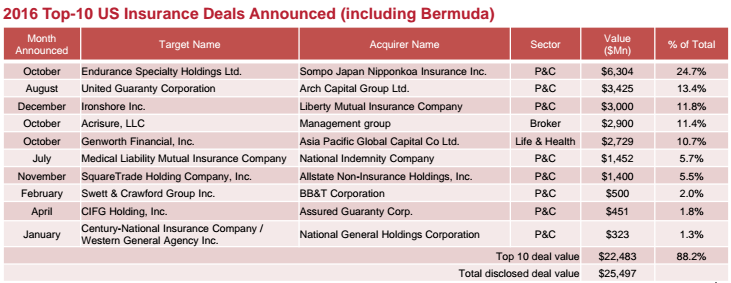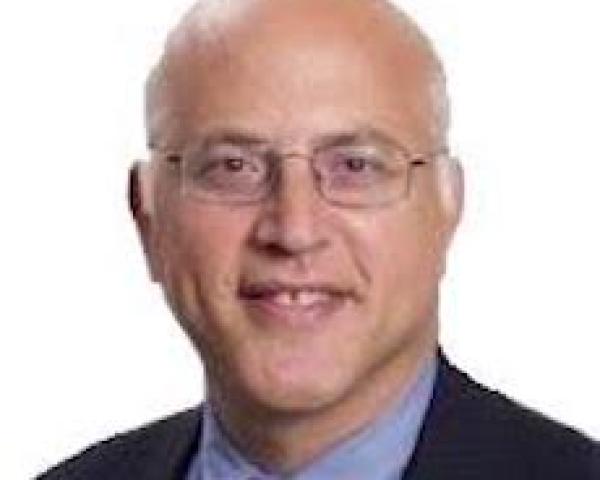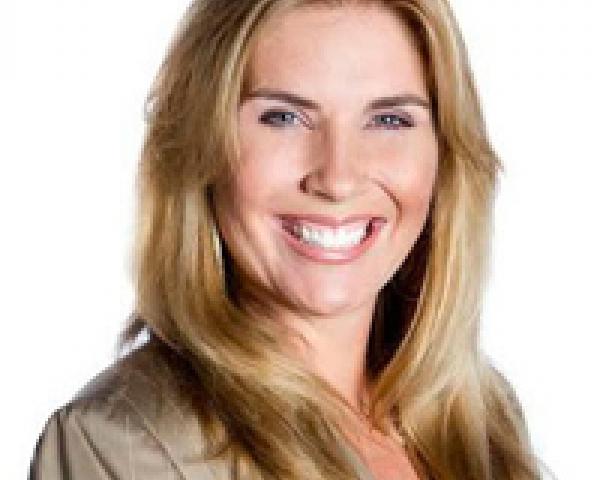Is There a Future for MGAs?
MGAs have a unique role in the insurance life cycle, and they will either innovate and evolve or be eliminated from the food chain.

MGAs have a unique role in the insurance life cycle, and they will either innovate and evolve or be eliminated from the food chain.

Get Involved
Our authors are what set Insurance Thought Leadership apart.
|
Partner with us
We’d love to talk to you about how we can improve your marketing ROI.
|

Cory Crosland is the CEO of Croscon, a digital product studio in NYC. Croscon works with big thinkers in insurance to grow and streamline their programs through digital transformation.
We need folks who take responsibility, the connectors, the ones with insight, those who are fair and never lose hope when the chips are down.

Valentino Rossi (a.k.a the living legend of MotoGP) is 37 years old (a lifetime in motorsport years), is first in all-time 500cc (MotoGP) race wins standings with 88 victories and is second in all time overall wins standings with 114 race wins (just behind Giacomo Agostini, with 122.) But it’s not just Rossi’s stats, victories, poles, podiums or championship wins that lure the crowds to rally behind him no matter which team he’s on.
Watching riders close up in action is like seeing someone ride a 241 km/h rocket — with riders disappearing over the sides of their bikes, one knee grazing the tarmac, and riders leaning over at angles that seem to defy the laws of physics. A very obviously skillful, fast-moving spectacle with crashes and passing galore, it is more gladiatorial than car racing.
Rossi’s fans are the maddest of all. Every year, hundreds of motorsport fans have pictures of Rossi tattooed on their backs, while others have Rossi’s number, 46, tattooed on their chests. At the Italian GP, hillsides are covered in yellow, Rossi’s color. In Germany, fans turn up on medical drips in homage to the “Doctor,” as Rossi is known.
See also: Does Your Culture Embrace Innovation? We can easily identify the Rossis in our workplaces. They are the folks who take responsibility, the connectors, the ones with insight, those who are fair and never lose hope even when the chips are down. The leaders, the innovators, the promise-makers and the supporters. Those who do more than they are asked, care, speak the truth, change things for the better and inspire others. It is the personality and energy that is unique to the individual that makes all the difference. It is the skills that really matter — the human skills that indicate a high level of emotional intelligence (EQ) that make things happen, propel projects forward, create and sustain partnerships and facilitate collaboration. Without these skills, we’d all be rendered bots. Yet we persist, hiring and promoting based on easily defined skills that can be measured like the stats in motorsport. We can all agree that a rider needs to know how to ride, a designer must know how to design, and an underwriter must know how to assess risks. But when an employee demoralizes the entire team, undermining a project, or a bully causes future stars to quit the organization, we practically need an act of Parliament to get rid of him (even though that person is stealing from us!). We know how to measure productivity, but we have trouble measuring commitment and passion. Would we rather be powerful bystanders? Is the professional expertise all that matters? How, then, do we explain the different outcomes achieved by similarly skilled professionals? Rossi’s dominance in motorcycle racing, along with his philosophy that generating excitement is more important than winning, has given his sport mainstream appeal and has made him a superstar worshipped as a living legend by countless adoring fans. Rossi’s energy, style and panache draws crowds from around the world. He has made motorcycle racing fun, interesting and meaningful.
See also: Building a Strong Insurance Risk Culture
We only have to look at any thriving organization and we’ll find what differentiates it from the organizations that are struggling is the difficult-to-measure attitudes, personalities, processes and perceptions of the people who do the work. Culture defeats strategy outright!
Rossi’s dominance in motorcycle racing, along with his philosophy that generating excitement is more important than winning, has given his sport mainstream appeal and has made him a superstar worshipped as a living legend by countless adoring fans. Rossi’s energy, style and panache draws crowds from around the world. He has made motorcycle racing fun, interesting and meaningful.
See also: Building a Strong Insurance Risk Culture
We only have to look at any thriving organization and we’ll find what differentiates it from the organizations that are struggling is the difficult-to-measure attitudes, personalities, processes and perceptions of the people who do the work. Culture defeats strategy outright!
Get Involved
Our authors are what set Insurance Thought Leadership apart.
|
Partner with us
We’d love to talk to you about how we can improve your marketing ROI.
|

Shahzadi Jehangir is an innovation leader and expert in building trust and value in the digital age, creating scalable new businesses generating millions of dollars in revenue each year, with more than $10 million last year alone.
Oklahoma's insurance commissioner specifies changes that he believes must be made during the "repeal and replacement" of the ACA.




Get Involved
Our authors are what set Insurance Thought Leadership apart.
|
Partner with us
We’d love to talk to you about how we can improve your marketing ROI.
|
Gains from projects are being optimized as insurers look to solidify their tech infrastructure and prepare for new initiatives.

The insurance industry is in transition — there's no doubt about it. So much is happening regarding digital strategies, insurtech, customer expectations, analytics and other areas that are positioning the industry for the future. Despite all the activity, IT budgets for P&C and L&A insurers in North America this year appear to be subdued, with average increases of only 2.7%, following larger increases over the past few years.
There are a couple explanations for this seeming contradiction. For one, business conditions in the industry are less favorable than they have been in recent years, prompting predictions of slower growth for key lines. This results in budgets for the existing tech infrastructure that hold the line. It should also be noted that the percentage of insurers planning decreases has jumped to 15%, which factors into the average and reinforces the notion that there is an industry bifurcation occurring, with a widening gap between the winners and losers.
A key trend identified in our recent research report, “2017 Insurance Technology Spending Priorities and Plans,” is that many projects are shifting from new or replacement initiatives to enhancing systems already in place. There are still plenty of new deals out there and big modernization or replacement projects underway in specific areas (such as commercial lines policy systems). But the big picture seems to be that the gains from many projects in prior years are being optimized and extended as insurers look to solidify their tech infrastructure and prepare for new initiatives.
See also: Innovation — or Just Innovative Thinking?
But there is another side to the story.
Many of the newer tech initiatives are being driven and funded by business units or at the corporate level. This is not a brand-new trend, but the more that tech strategy becomes intertwined with business strategy, the more often that business executives are the catalysts and sponsors. Chief marketing officers are driving change in digital and customer experience. Newly established chief digital officers are key players at many companies now. Strategists and business unit heads are seeking advantages from analytics, emerging technologies and insurtech. Senior corporate leaders are creating ventures and are asking how the digital connected world changes their customers and the insurance industry.
Insurers expect IT budgets to pick up again starting in 2018. In the meantime, the strategy work that is underway below the surface at many companies is likely to result in increases for tech-based initiatives related to new areas. Major investments and plans for distribution channels, underwriting, core systems and other areas are not going away. In fact, they are vital to maintaining modern systems in these mission-critical areas.
Overall, 2017 will be a pivotal year for the industry — a year of transition. Expect to see investments increase in initiatives aimed at innovation and transformation as the pace picks up and the industry carves out new roles in the digital, connected world.
Get Involved
Our authors are what set Insurance Thought Leadership apart.
|
Partner with us
We’d love to talk to you about how we can improve your marketing ROI.
|

Mark Breading is a partner at Strategy Meets Action, a Resource Pro company that helps insurers develop and validate their IT strategies and plans, better understand how their investments measure up in today's highly competitive environment and gain clarity on solution options and vendor selection.
A customer-centric marketing approach starts with the realization that there is no “average” customer.

Get Involved
Our authors are what set Insurance Thought Leadership apart.
|
Partner with us
We’d love to talk to you about how we can improve your marketing ROI.
|

Andrea Silvello has more than 10 years of experience at internal consulting firms, such as BCG and Bain. Since 2016, Silvello has been the co-founder and CEO of Neosurance, an insurance startup. It is a virtual insurance agent that sells micro policies.
21% of the insurance business is at risk of being lost to standalone fintech companies within five years.

 Highlights of 2016 deal activity
Insurance activity remains high
Insurance deal activity has steadily increased since the financial crisis, reaching records in 2015 both in terms of deal volume and announced deal value. While M&A declined in 2016, activity remained high, with announced deals and deal values exceeding the levels seen in 2014. In 2015, deal value was driven by the Ace-Chubb merger, valued at $29.4 billion, which accounted for 41% of deal value.
See also: A Closer Look at the Future of Insurance
Significant transactions
Key themes in 2016 include:
Highlights of 2016 deal activity
Insurance activity remains high
Insurance deal activity has steadily increased since the financial crisis, reaching records in 2015 both in terms of deal volume and announced deal value. While M&A declined in 2016, activity remained high, with announced deals and deal values exceeding the levels seen in 2014. In 2015, deal value was driven by the Ace-Chubb merger, valued at $29.4 billion, which accounted for 41% of deal value.
See also: A Closer Look at the Future of Insurance
Significant transactions
Key themes in 2016 include:
 Key trends and insights
Sub-sectors highlights
Life & Annuity – The sector has been affected by factors such as Asian buyers diversifying their revenue base, regulations such as the fiduciary rule by the Department of Labor and the SIFI designation, divestitures and disposing of underperforming legacy blocks, specifically variable annuity and long term care businesses.
P&C – The sector has been experiencing a challenging pricing cycle, which has driven insurers to 1) focus on specialty lines and specialized niche areas for growth and 2) consolidate. We have seen large insurance carriers enter the specialty space. Furthermore, with an abundance of capacity and capital, the dynamics of the reinsurance market have changed. Reinsurers are trying to adjust to the new reality by turning to M&A and innovation in products and markets.
Insurance Brokers – The insurance brokerage space has seen a wave of consolidation given the current low-interest-rate environment, which translates into cheap debt. The next consolidation wave is likely in managing general agents, as they are built on flexible and innovative foundations that set them apart from traditional underwriting businesses.
See also: Key Findings on the Insurance Industry
Insurtech has grown exponentially since 2011. According to PwC’s 2016 Global FinTech Survey, 21% of insurance business is at risk of being lost to standalone fintech companies within five years. As such, insurers have set up their own venture capital arms, typically investing at the seed stage, in efforts to keep up with the pace of technology and innovation and find ways to enhance their core business. Investments by insurers and their corporate venture arms are on pace to rise nearly 20x from 2013 to 2016 at the current run rate.
Conclusion and outlook
The insurance industry will be affected by the proposed policies of the Trump administration, especially on tax and regulatory issues. Increasing bond yields and the Fed’s latest signal about a quick pace of rate increases in 2017 are expected to improve portfolio income for insurers.
Key trends and insights
Sub-sectors highlights
Life & Annuity – The sector has been affected by factors such as Asian buyers diversifying their revenue base, regulations such as the fiduciary rule by the Department of Labor and the SIFI designation, divestitures and disposing of underperforming legacy blocks, specifically variable annuity and long term care businesses.
P&C – The sector has been experiencing a challenging pricing cycle, which has driven insurers to 1) focus on specialty lines and specialized niche areas for growth and 2) consolidate. We have seen large insurance carriers enter the specialty space. Furthermore, with an abundance of capacity and capital, the dynamics of the reinsurance market have changed. Reinsurers are trying to adjust to the new reality by turning to M&A and innovation in products and markets.
Insurance Brokers – The insurance brokerage space has seen a wave of consolidation given the current low-interest-rate environment, which translates into cheap debt. The next consolidation wave is likely in managing general agents, as they are built on flexible and innovative foundations that set them apart from traditional underwriting businesses.
See also: Key Findings on the Insurance Industry
Insurtech has grown exponentially since 2011. According to PwC’s 2016 Global FinTech Survey, 21% of insurance business is at risk of being lost to standalone fintech companies within five years. As such, insurers have set up their own venture capital arms, typically investing at the seed stage, in efforts to keep up with the pace of technology and innovation and find ways to enhance their core business. Investments by insurers and their corporate venture arms are on pace to rise nearly 20x from 2013 to 2016 at the current run rate.
Conclusion and outlook
The insurance industry will be affected by the proposed policies of the Trump administration, especially on tax and regulatory issues. Increasing bond yields and the Fed’s latest signal about a quick pace of rate increases in 2017 are expected to improve portfolio income for insurers.
Get Involved
Our authors are what set Insurance Thought Leadership apart.
|
Partner with us
We’d love to talk to you about how we can improve your marketing ROI.
|

John Marra is a transaction services partner at PwC, dedicated to the insurance industry, with more than 20 years of experience. Marra's focus has included advising both financial and strategic buyers in conjunction with mergers and acquisitions.
We want to believe that every tree grows to the sky, that every startup will be Uber, but more than 90% of startups fail.


Toward the end of my days as a reporter at the Wall Street Journal, some friends started calling me Dr. Death, because everything I covered seemed to shrivel up. IBM was the most important company in the world when I started writing about it in 1986 and was having a near-death experience by the time I moved off the beat in 1993. Mexico was the darling of the developing world when I moved there in 1993 but pretty much fell apart in 1995 following a devaluation of the currency. When I moved to Silicon Valley in 1996, an acquaintance who worked in PR at Intel called me and said, "I will pay you money to not cover my company." I did, in fact, get assigned to the semiconductor industry, which went into a two-year recession.
Now, I'm not trying to scare anybody. I've been involved with ITL for almost 3 1/2 years now, and so far, so good. The insurance industry's potential seems to me to be boundless. But my time as Dr. Death convinced me that we don't focus enough on the possibility of failure. That conviction led to my book with Chunka Mui, "Billion Dollar Lesssons: What You Can Learn From the Most Inexcusable Business Failures of the Last 25 Years," for which we had 20 researchers spend two years looking at 2,500 failures. That conviction has led to quite a bit of work since then, too, on failures and to the belief that, as we look at the bounty of innovation appearing in insurtech, we need to keep this in mind: We want to believe that every tree grows to the sky, that every startup will be Uber, but more than 90% of startups fail.
The question is: Which are the 90%, and which are the 10% that will thrive, transforming the industry? The best analysis I've seen on the issue comes from Nick Lamparelli, who has given us "A Simple Model to Assess Insurtechs." We at ITL continue to build out the capabilities of The Innovator's Edge, which not only tracks the more than 850 insurtechs we've identified but which has been gathering the sort of information that providers tell us will help them find those they want to buy from, those they want to form partnerships with and those they may want to acquire. (Side note to insurtechs: If you haven't yet filled out our Market Maturity Review, please contact us at info@insurancethoughtleadership.com; a half-hour spent on the MMR will help you gain visibility within our community.) We'll continue to do our part to help you separate the wheat from the chaff.
For now, I mostly want to remind you that there really is a lot of chaff, so be careful. When I was at a personal computing conference in 1987 and retired to the bar—where the real work was done—I sat next to a guy who told me about his tiny startup and a product it called Presenter. I knew immediately he had a winner and wrote about the product in the Journal. You know the product as PowerPoint. But it's usually a lot harder to know who the winners will be.
Get Involved
Our authors are what set Insurance Thought Leadership apart.
|
Partner with us
We’d love to talk to you about how we can improve your marketing ROI.
|

Paul Carroll is the editor-in-chief of Insurance Thought Leadership.
He is also co-author of A Brief History of a Perfect Future: Inventing the Future We Can Proudly Leave Our Kids by 2050 and Billion Dollar Lessons: What You Can Learn From the Most Inexcusable Business Failures of the Last 25 Years and the author of a best-seller on IBM, published in 1993.
Carroll spent 17 years at the Wall Street Journal as an editor and reporter; he was nominated twice for the Pulitzer Prize. He later was a finalist for a National Magazine Award.
IT security is still a low priority for CIOs and mid-level managers. Less than 10% of an insurer’s IT budget is typically focused on security.

Get Involved
Our authors are what set Insurance Thought Leadership apart.
|
Partner with us
We’d love to talk to you about how we can improve your marketing ROI.
|

Mitch Wein is senior vice president of research and consulting at Novarica with international expertise in IT leadership and transformation as well as technology strategy for life, annuities, health, personal lines, commercial lines, wealth management and banking.
Consider that a claims adjuster could directly tune in via VR for a detailed view of property damage, via a gig worker who is on-site.

Get Involved
Our authors are what set Insurance Thought Leadership apart.
|
Partner with us
We’d love to talk to you about how we can improve your marketing ROI.
|

Robin Roberson is the managing director of North America for Claim Central, a pioneer in claims fulfillment technology with an open two-sided ecosystem. As previous CEO and co-founder of WeGoLook, she grew the business to over 45,000 global independent contractors.
Companies must increasingly rely on technology to achieve more with less — so one type of manager is dangerous.

Get Involved
Our authors are what set Insurance Thought Leadership apart.
|
Partner with us
We’d love to talk to you about how we can improve your marketing ROI.
|

Ernie Bray, chairman and CEO of ACD, has more than 20 years of experience in the insurance and automobile claims industry. Bray is a dynamic force in driving innovation and technology to transform the auto claims industry and connect a highly fragmented business sector.